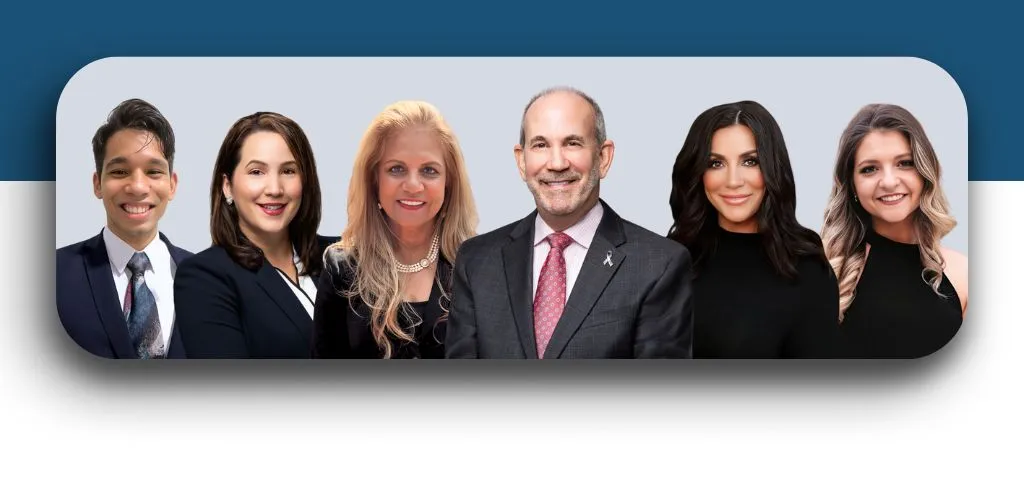00:00:04:07 – 00:01:41:18
Jay Shorr
Welcome to Shorr Solutions: The Podcast. I’m your host, Jay Shorr. I’m the CEO and founder of Shorr Solutions, a national and award-winning consulting firm, assisting aesthetic and surgical practices with their operational, administrative and financial success. I have an amazing team of practice management experts and clients across the U.S. and as an industry expert with firsthand experience owning a multi-million-dollar cosmetic dermatology and plastic surgery practice. Listen in as I lend you my expertise and best tips to successfully manage and grow your aesthetic practice. I will also be bringing in guests along the way, so get ready to be equipped to operate your aesthetic practice strategically and profitably. Welcome to Shorr Solutions: The Podcast.
Welcome to another episode of Shorr Solutions: The Podcast episode number 118. And I’m your host, Jay Shorr. Today we’re going to be speaking about how should provider compensation be structured. So what is a provider? A provider is anyone that provides goods or services for any type of financial remuneration. That could be a physician, a nurse practitioner, a physician associate. An esthetician. Maybe in some areas a medical assistant if they generate revenue, but most of the time they provide a service that’s non compensable because they aid and assist.
00:01:41:20 – 00:03:15:21
So to structure your provider compensation you need to consider the following. First transparency you have to maintain clear and open communication between you and the provider. For the service that they are providing how will they be compensated? And what are the metrics that they’re going to be compensated on? Secondly, we all must be flexible. We have to adjust that based on feedback and the changing market. Now why? Because I can’t tell you how many times I hear in Florida they do this. And in California they do this. And in New York they do this. Well, first of all, in different states and different Commonwealth throughout the United States, certain providers aren’t allowed to provide services in one state or Commonwealth where they are in another. Example, RN’s, estheticians and medical assistants in the state of Florida cannot provide injectable, can not provide neurotoxin services or laser services where in other states and Commonwealths they can. And that’s where the compliance comes in because you have to comply with health care regulations. But what regulations are they? Those are state regulations because the regulatory guidance comes from either the Board of Medicine or the Board of Nursing or the Department of Health.
00:03:15:23 – 00:03:54:11
So what is the type of provider? Consider the providers roles and their specific skill set. Like I said, the provider can be a physician associate. It can be a nurse practitioner, and esthetician or it could be another physician who is an associate. And I don’t want to mix up physician associate PA with a physician who happens to be an associate. So the type of provider is what really mandates the type of services they provide and the type of compensation that they will receive.
00:03:54:12 – 00:05:10:02
So what is a base salary that aligns with market standards and the provider’s experience? That varies and it varies greatly because is it a base salary that you’re giving the employee or your associate plus compensation on the services they provide, or is it strictly based on the services they provide and the revenue that they generate? Some offer just straight salary. Others offer an hourly salary. Hourly rate plus compensation based on a metric, whether it’s a dollar per procedure. And I don’t mean $1 X amount of dollars per procedure on the gross revenues, some on the individual treatment or a percentage. Now, I want you all to be very, very careful, because I’m not saying that generically in certain states and Commonwealths, it is illegal to pay a percentage for the referral of a patient or for the production. I’m not going to get into that now. I just want you all to be careful to make sure that you honor the state and Commonwealth regulations about compensation and referral.
00:05:10:04 – 00:07:35:09
Revenue generation. If you ever heard the expression eat what you kill, replace that, because when you kill it, it’s dead. I believe eat what you grow so that it keeps growing. It’s an annual. It’s a perennial. It keeps on living. So foster and eat what you grow for revenue generation and foster that mentality amongst your providers by linking compensation to productivity. I can share with you that many people, if they are paid a straight salary or straight hourly, at 40 hours, 30 hours, whatever it is, and there is no additional compensation. Many times they’re going to get the feeling is why should I work harder if I’m not being paid anymore or any additional? I don’t agree with that because that is what we’re fostering if we allow that to happen. But really many times you should pay somebody on a production because that gives them the incentive. Remember the old United Way thermometer? It was a thermometer. And they the United Way had a goal, $1 million, $5 million, $10 million. And as they’re reaching the goal, the red bulb on the thermometer grew. Well, I would urge each and every one of you to allow your providers to be compensated on the revenue that they generate above a threshold, so you’re guaranteeing them for coming to work and providing services outside of just straight revenue production, because, you know, even charting isn’t revenue production. The actual injectable performance of the laser treatment is. But we still have to chart. So they’re being paid for office functions and anything else that they do and follow ups, calling the patient after the procedure to see how they’re doing, etc.
However, have a matrix that it could be X amount of dollars per procedure or X amount of dollars in revenue thresholds. I am not a believer in paying X amount of dollars as a percentage to the revenue. The generate per procedure. I’d rather that arithmetically progress that when you hit certain thresholds, maybe the percentages of gross revenues may increase. There is no violation in the law when you do it by revenue versus individual procedures. We got to be very, very careful.
00:07:35:11 – 00:08:43:06
Now there’s a term called KPIs key performance indicators. Example patient retention rate. We can compensate staff members by keeping patients in our practice new patient acquisition. What does it cost to keep a patient. What does it cost to acquire a patient. Mr.. Wonderful from the Shark Tank, Kevin O’Leary always asked the same question. What does it cost to generate that new client? In our world, it’s a patient. So new patient acquisition and overall practice performance. So we can compensate our providers by these KPIs. The key performance indicators based on patient retention rate, not just one hit wonders. Not the Groupon deal of the day never to be seen again until you do another Groupon deal. Not a good business decision. Ensure that your metrics comply with federal and state and Commonwealth regulations to avoid any implication of incentivizing referrals for violating health care rules. I can’t say that enough.
00:08:43:08 – 00:10:11:06
Yes. We’re going to take a quick break and a slight intermission. I’d like to take a moment to tell you about our conversion cascade online course. With this self-guided and powerful course, you and your team will be able to master acquiring and retaining more patients as a step by step sales funnel training. This course is designed to help you and your team attract more patients, convert calls to consults, convert consoles to treatments and procedures, and keep patients coming back for more. Not only will our conversion cascade online courses help to strengthen and develop your team’s phone sales and customer service skills, it will also serve as a valuable onboarding training tool for each and every new team member. Plus, in the course, you’ll receive downloadable marketing checklists, phone scripts, conversion tracking tools, and more. So why not sign up for the course today? It only takes less than 4 hours to complete and you can finish at your own pace and you’ll have lifetime access. And as a special thank you for being our podcast listener, we’re giving you 20% off. Just enter the Discount Code “podcast” to start saving today. Click the link in our show notes to sign up for the Conversion Cascade online course, acquire and retain more patients right now.
00:10:11:08 – 00:11:19:08
Negotiate with your high level providers. Number one, you have to identify long term goals for the provider and the practice. And what are those goals? If you hit a certain amount of revenue, if you perform a certain amount of procedures, if you retain a certain amount of patients, if you provide a creative compensation package, and what can that compensation package be? Doesn’t always have to be money. It can be additional PTO. It can be incentive additionally, like, we’ll pay your phone bill. It could be additional will pay additional health insurance. It always can be something different for your high level providers based on KPIs and offer career advancement and educational opportunities. Are they going to be stuck doing what they’ve always been doing? Or sometimes people don’t want to be in a supervisor capacity. Other times they do offer them potential partnership. Why is that? Because it keeps them in your practice offer career advancement, educational opportunities. Invite them all to different conferences.
00:11:19:10 – 00:13:40:23
So what are those benefits? Job benefits? Where is it? Number one holidays, PTO, vacation days, sick days? PTO, vacation, and sick days can all be considered the same thing except in California because in California they have a mandate of three sick days outside of vacation and PTO. But you can offer different holidays. Not everybody offers paid holidays. So what are those holidays? I’ll put them in order. New Year’s Day, Memorial Day, Independence Day or 4th of July, Labor Day, Thanksgiving and Christmas. Those are my six paid holidays. And of course, you can give Friday off. After Thanksgiving. You can give Christmas eve. You can give New Year’s Eve. And if you want for those who have different religious affiliations, you can give the Jewish New Year and the Jewish Day of Atonement and any of the other religious holidays. Ramadan specific days. Kwanzaa. I want you all to be very knowledgeable of all the other holidays out there, and be sensitive to everybody. All right. Retirement plans, IRA, 401k we offer that to ours and we offer the maximum match. Why? It’s a good write off to the business, but more importantly, it’s a way for your staff to get additional money that they can put away pre tax. I don’t want to get into that. Some are pre tax. If you don’t do the Roth, if you do the Roth IRA then you you pay the taxes on it. But there are no taxes on the gain at the end. That’s a whole other lecture. Health insurance I know health insurance premiums are very expensive today, so you can offer a stipend or a portion, depending upon the level of your employees. You can pay for them only and then have their family, additional premiums that you can cover or have them pay for it. You can get very creative and employee discounts on procedures and retail skin products. So that’s up to you. Whether you want off of your surgical procedure for free or your procedure free, and have them pay the actual or fee or the cost of the tips skin care, you can give it to them, let them promote it, or you can actually have them pay it at cost. These are all different things are being creative.
00:13:41:00 – 00:15:22:06
So what type of compensation structures are there? There is the hourly. There’s the salary. And like I said there are the tiered commission, which means that you when you reach between X dollars and X dollars, it’s 1% or one certain dollar figure. And when you reach the next tier, it’s an even higher. And when you reach the next tier, it’s even higher. Why? Because it gets the people to get really excited about hitting that next level. So the when they do, that’s when the money really kicks in a draw against the commission. So what is that? Which means you give them X amount of thousands of dollars and that is a pay. But you offer them a commission base. And when they hit that commission they become straight commission. And there’s no more hourly or salary. They’re all against the commission, thereby still guaranteeing them a minimum. Naturally, it has to be at least the minimum wage here in all the states and commonwealths. And you can also do it on performance based metrics. Not a bad idea. KPI is performance based. If you do this, you will receive that. And the higher the performance, the higher the compensation and the less you can do a hybrid of all of these that I’ve just mentioned, a hybrid of tier, a hybrid of draw against hybrid of based performance based metrics. Whatever works for you. And then I would urge you to even speak with some of your professionals, your accountant, your lawyer, people like us that could help you create these.
00:15:22:08 – 00:16:33:23
Additional models to consider. Profit sharing. I have that with my team. I’m offering profit sharing to help them and allow them to even do better. And I’m also offering my team equity ownership in our company so that the higher we go, the more money you make. And my senior members of my team are being offered equity. So they are going to now be my partners. And you can either buy in or you’ll have sweat equity so that you’re going to be able to potentially own a piece of the rock one day. And then lastly, have bonuses for milestones. When you do certain things and the team does certain things. And we all actually do it together, we all succeed well together you can get a bonus. And in my last podcast webinar that you listened to, maybe even consider giving back. So ladies and gentlemen, that concludes episode 118 on how should provider compensation be structured. I look forward to seeing you on episode number 119. Good luck. God bless.
00:16:34:01 – 00:18:07:01
So that wraps up today’s episode of Shorr Solutions: The podcast. If we mentioned any website links, you can find them in our show notes to work directly with me and our award-winning team of consultants to increase efficiency, increase revenue and decrease costs in your aesthetic practice, schedule a free consult with us today. We will help you establish and refine your aesthetic practice’s protocols for maximum efficiency and productivity, decrease your expenses and increase your profitability with an expert financial analysis of your business. Attract more patients, convert calls to consults, convert consults to treatments and keep patients coming back for more. With our sales training, coaching and complimentary access to our conversion cascade online course. Recruit, hire and train new team members and manage any staff turnover with our human resource expertise plus more, head over to our show notes and click on the link to schedule a free 30-minute consult with us today. And if you enjoyed today’s episode, don’t forget to spread the word and share this episode with your friends, colleagues and the rest of your team. Remember to also follow us on social media @ShorrSolutions and sign up for our e-newsletter. You’ll learn about our latest tips, blog posts, services, videos, webinars and more. Links to our social media channels, and to sign up for our e-newsletter are in our show notes. So see you next time and remember to leave us a review and subscribe or more valuable content.














